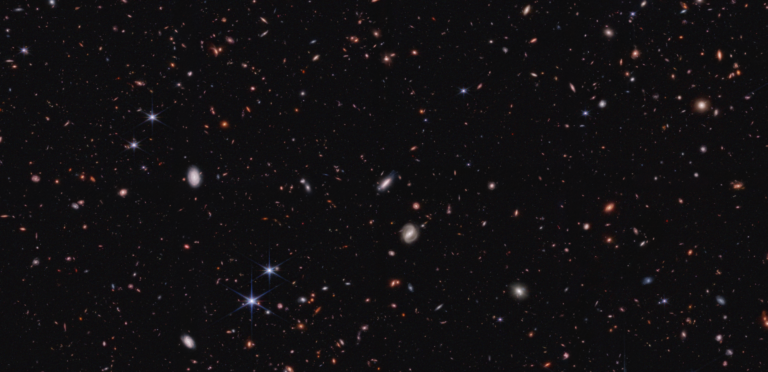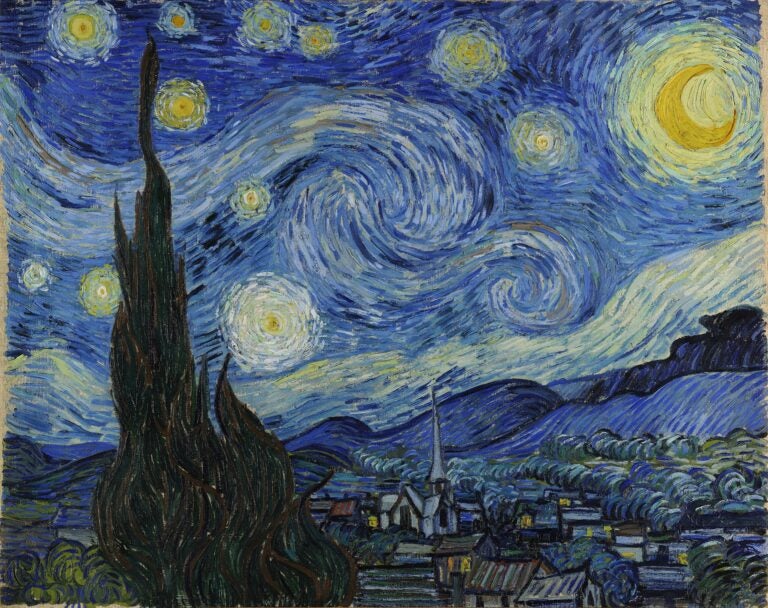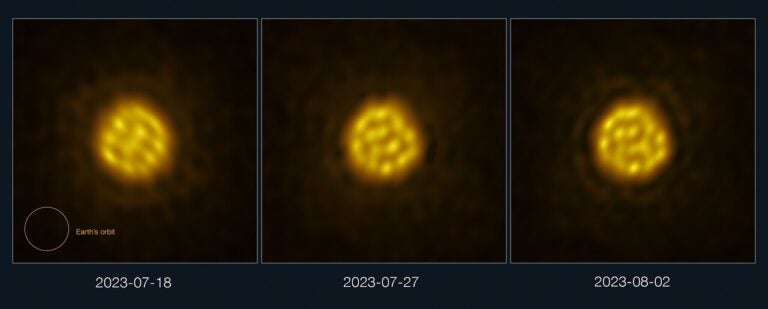A: It’s rare, but stars do collide in the densest parts of our galaxy: near the center and in massive globular star clusters. The outcome of the collision depends on how fast the stars are moving relative to each other, rather like a car accident. In star clusters, the stars are moving relatively slowly, and so the “fender bender” results in the two stars merging into one new, more massive star that we call a blue straggler. We can identify these stars fairly easily, since they are hotter and brighter than the other stars in the cluster.
The center of the galaxy is more like the interstate, and the stars are moving very quickly. A collision there is much more destructive, and often the aftermath is just “star bits” (that is, mostly hydrogen gas) spread out all over interstellar space. The most exciting collisions happen when a star runs into the central black hole in our galaxy. The star won’t survive, of course, but it goes out in a blaze of glory called a tidal disruption event. Some of the star’s material gets thrown away, but the rest falls into the black hole and forms a hot disk of gas before it is consumed.







![Albireo (Beta [β] Cygni) is a classic example of a double star with contrasting colors.](https://www.astronomy.com/uploads/2024/08/Albireo.jpg)


